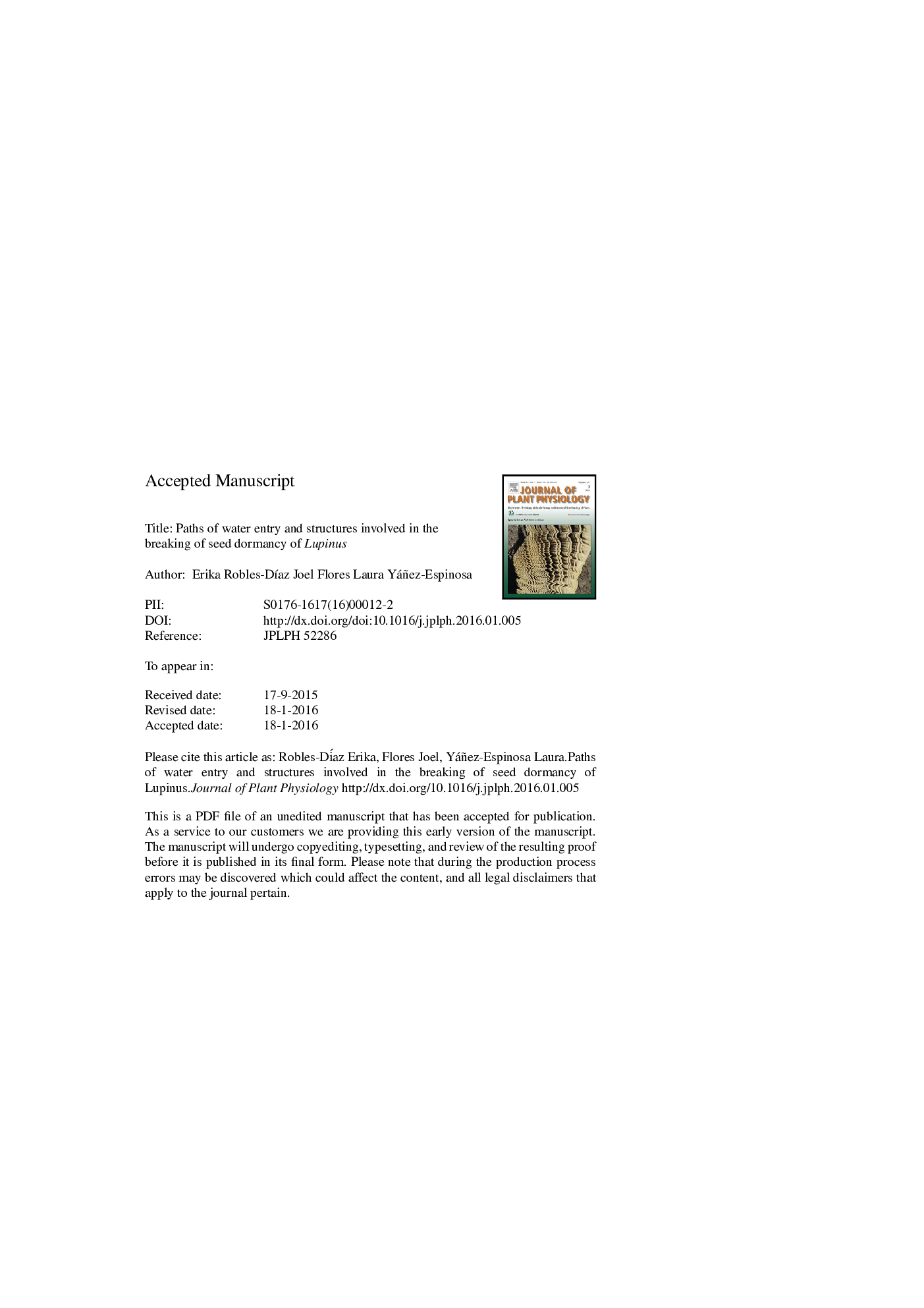| کد مقاله | کد نشریه | سال انتشار | مقاله انگلیسی | نسخه تمام متن |
|---|---|---|---|---|
| 8387255 | 1543885 | 2016 | 22 صفحه PDF | دانلود رایگان |
عنوان انگلیسی مقاله ISI
Paths of water entry and structures involved in the breaking of seed dormancy of Lupinus
دانلود مقاله + سفارش ترجمه
دانلود مقاله ISI انگلیسی
رایگان برای ایرانیان
موضوعات مرتبط
علوم زیستی و بیوفناوری
علوم کشاورزی و بیولوژیک
علوم زراعت و اصلاح نباتات
پیش نمایش صفحه اول مقاله

چکیده انگلیسی
Physical dormancy is the water impermeability of the seed coat caused by one or more palisade cell layer(s) called macrosclereids. The specialised structure for water entry sites is the water gap, which serves as a detector of environmental cues for germination. In Fabaceae, the water gap is the lens, although another seed structure for water entry could exist. In this study, we identified the initial site of water entry, observed the hydration of a cushion-like structure near the radicle, described the anatomy of the water gap, and analysed the association of anatomical seed traits with the initial site of water entry and the imbibition velocity of six species of Lupinus from the state of Jalisco, Mexico. Dye tracking with a toluidine blue solution was used to identify the initial site of water entry. The anatomical description was performed using conventional microtechnique and a light microscope. The entry of the toluidine solution into seeds of L. montanus was observed after 6Â h, followed by L. exaltatus and L. mexicanus after 18Â h and L. elegans, L. reflexus and L. rotundiflorus after 48Â h. The site of water entry was the lens in L. elegans, L. exaltatus, L. reflexus and L. rotundiflorus and the micropyle in L. mexicanus and L. montanus. The cushion-like structure was responsible for water accumulation in embryo imbibition. Significant differences among anatomical seed traits such as thickness in the hilar region, the counter-palisade layer, cushion-like structure, epidermis, hypodermis, and innermost parenchyma layer were found among the species.
ناشر
Database: Elsevier - ScienceDirect (ساینس دایرکت)
Journal: Journal of Plant Physiology - Volume 192, 15 March 2016, Pages 75-80
Journal: Journal of Plant Physiology - Volume 192, 15 March 2016, Pages 75-80
نویسندگان
Erika Robles-DÃaz, Joel Flores, Laura Yáñez-Espinosa,